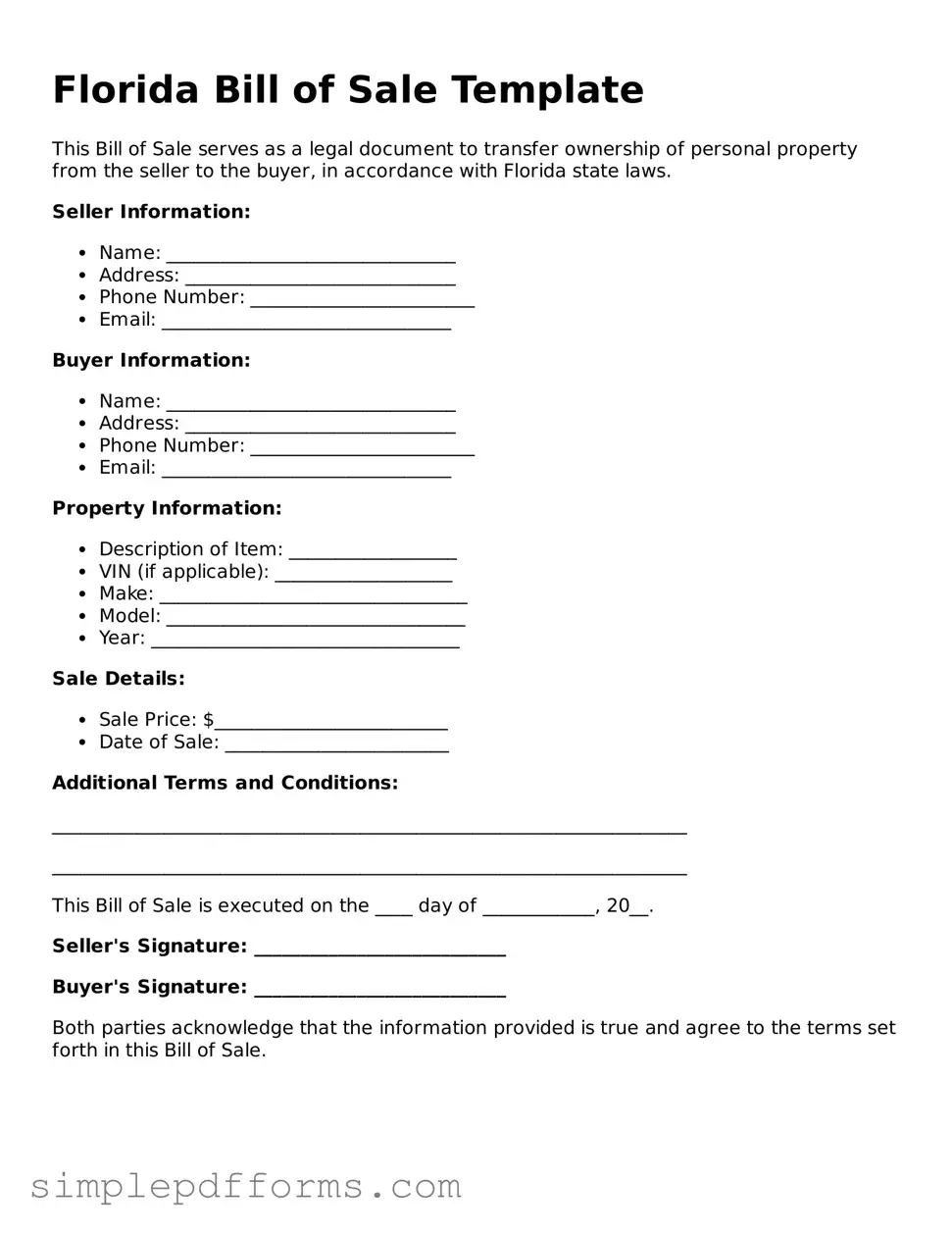When filling out the Florida Bill of Sale form, individuals often make several common mistakes that can lead to confusion or legal issues down the road. One of the most frequent errors is failing to provide complete information about the item being sold. This includes not only the item’s make and model but also the Vehicle Identification Number (VIN) or serial number. Omitting these details can make it difficult to prove ownership later.
Another common mistake is not including the correct date of the transaction. The date is essential for establishing when the sale occurred. If the date is incorrect or missing, it could lead to disputes regarding ownership or liability. Always double-check the date to ensure it reflects the actual transaction day.
People also tend to overlook the importance of accurate seller and buyer information. Failing to include full names, addresses, and contact details can create problems if either party needs to be reached after the sale. This information is crucial for any future correspondence or legal matters that may arise.
Additionally, many individuals forget to sign the document. A Bill of Sale is not legally binding without the signatures of both the seller and the buyer. Make sure both parties sign and date the form to validate the transaction. Without signatures, the document may be rendered ineffective.
Another mistake is neglecting to provide payment details. Whether it’s cash, a check, or another form of payment, documenting how the transaction was completed is important. This information helps both parties keep track of the sale and can be useful for tax purposes.
Sometimes, sellers mistakenly think that a Bill of Sale is only necessary for high-value items. However, this document is important for all sales, regardless of the item's worth. Skipping this step can lead to complications in ownership transfer or disputes in the future.
Furthermore, people often fail to keep a copy of the Bill of Sale for their records. It’s advisable for both the buyer and seller to retain a copy of the completed form. This serves as proof of the transaction and can be helpful if any issues arise later.
In some cases, individuals may not understand the significance of including any warranties or disclaimers. If the item is sold "as-is," it should be clearly stated in the Bill of Sale. This protects the seller from future claims regarding the item’s condition.
Finally, not checking for errors before submission is a common oversight. Simple typos or incorrect information can lead to significant problems. Taking a moment to review the form for accuracy can save both parties from potential headaches later on.
